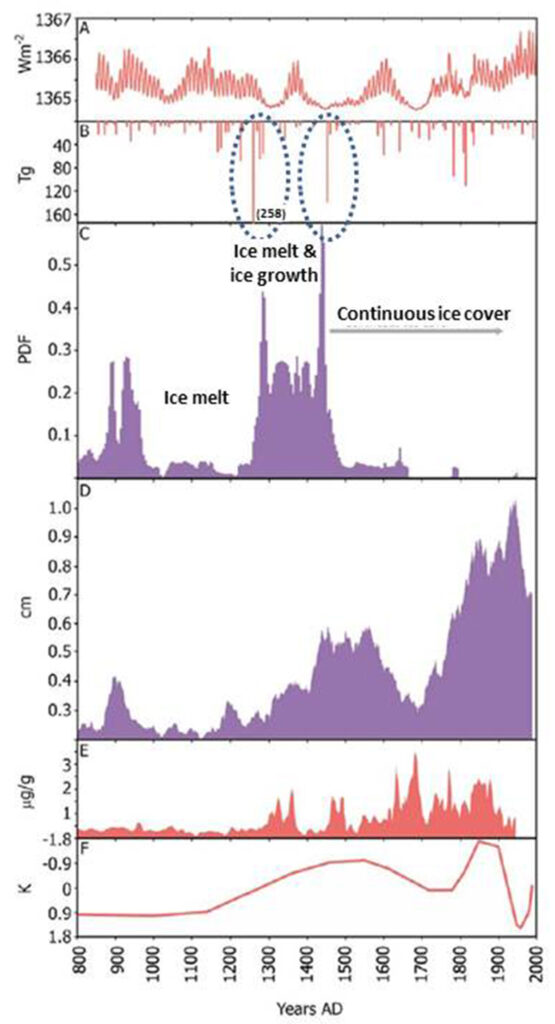Major volcanism appears to initiate and intensify the Little Ice Age

Global sulfate aerosol loadings (B, red bars highlighted by dotted blue ellipses) were highest at the beginning of the Little Ice Age in 1275 to 1300 AD and during a major intensification between 1430 and 1455 AD (C) (Miller et al., 2012).
Each section of the figure is as follows:
- Total solar irradiance based on a physical modeling of the solar surface magnetic flux and its relationship with cosmogenic isotopes (Schmidt et al., 2011).
- Global stratospheric sulfate aerosol loadings based on analysis of sulfate data from 54 ice cores drilled in Arctic and Antarctic ice (Gao et al., 2008).
- Ice cap expansion dates based on a composite of 94 Arctic Canada calibrated carbon-14 probability density functions.
- 30-year running mean varve thickness in Hvítárvatn sediment core HVT03-2 in Iceland (Larsen et al., 2011).
- Arctic Ocean sea ice recorded in a sediment core on the north Iceland shelf (Massé et al., 2008); heavy sea ice years correlate with anomalously cold summers across Iceland.
- Temperature anomalies over southern Greenland (with respect to the 1881–1980AD mean) from the borehole temperature inversion at DYE-3 (Dahl-Jensen et al., 1998).
Copied from Figure 2 in (Miller et al., 2012).